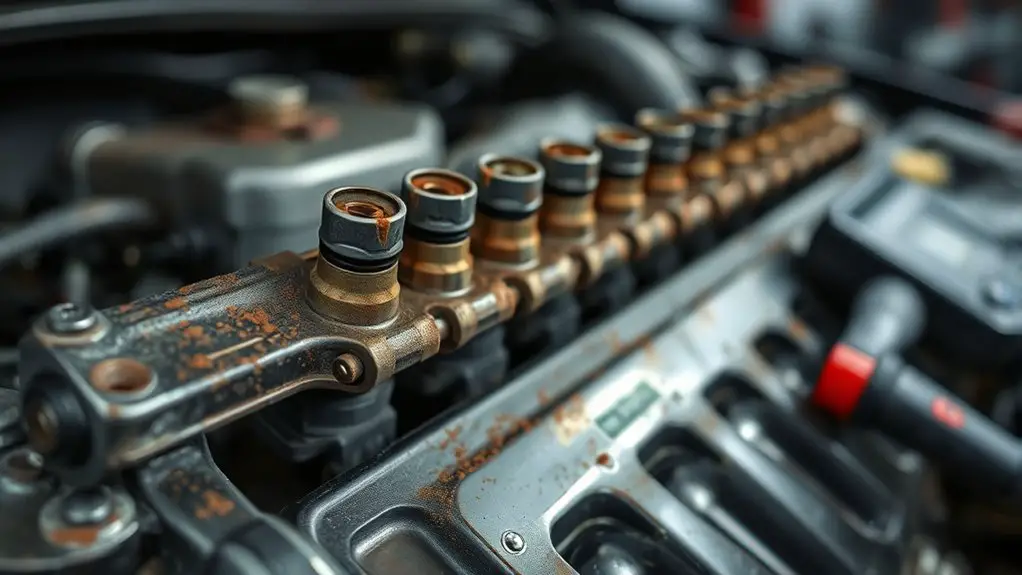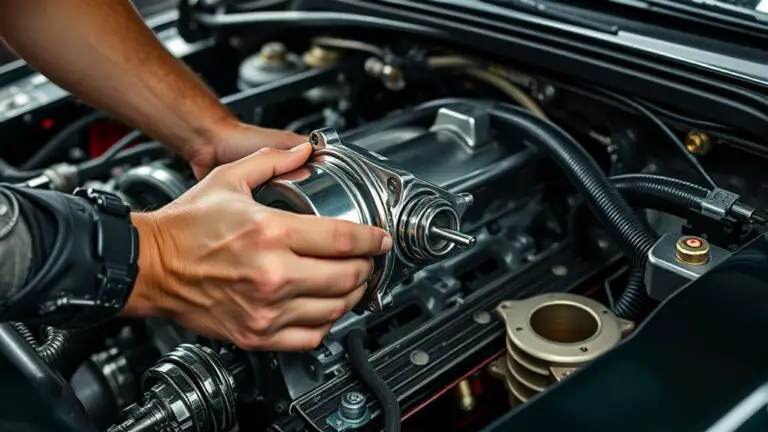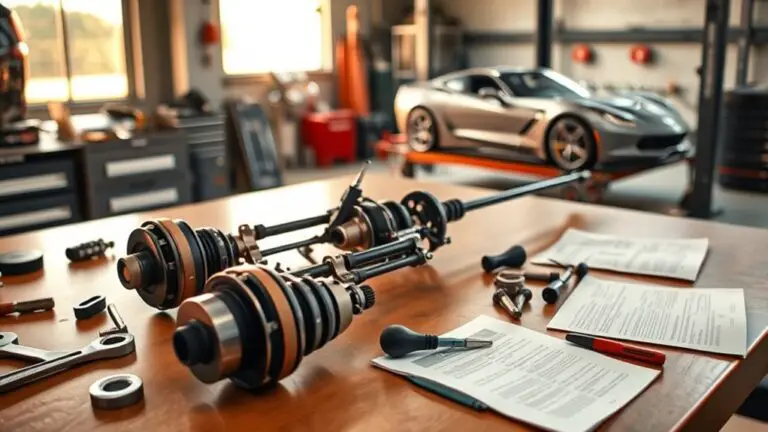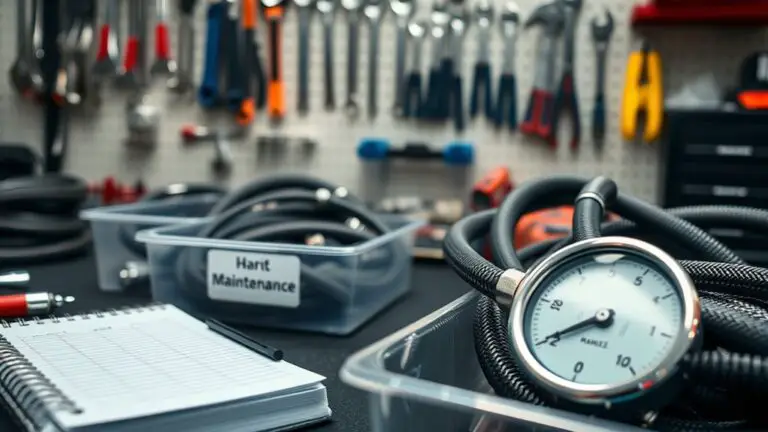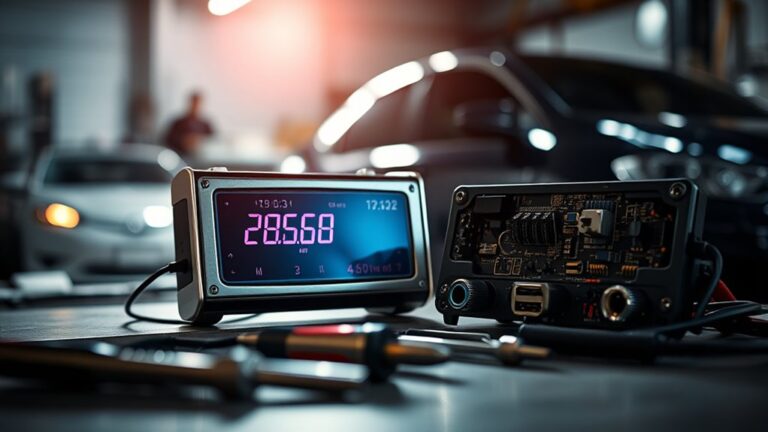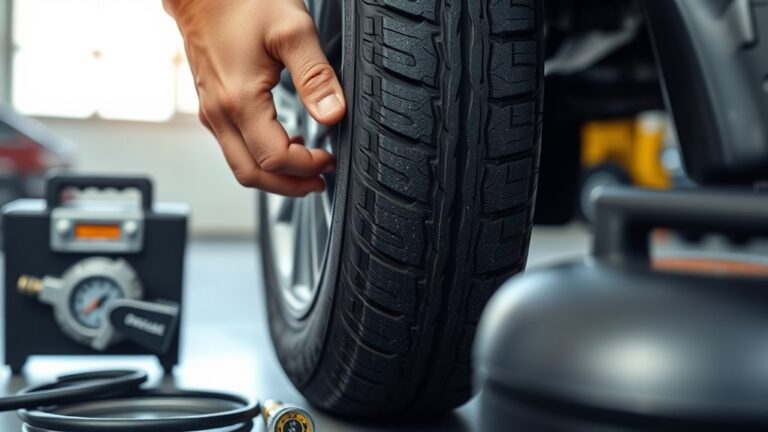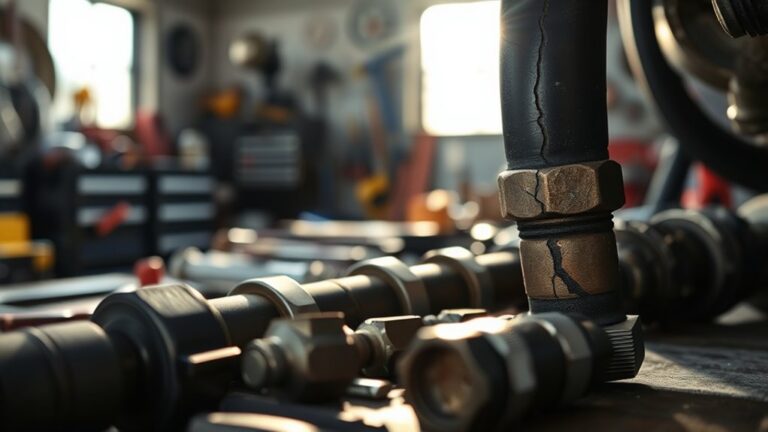When a Bad Fuel Rail Ruins Fuel Economy and What to Do
A bad fuel rail disrupts pressure and injector spray, which wastes fuel and lowers economy. You’ll notice fluctuating rail pressure, misfires, hard starts, and odd engine response as symptoms. Start with quick checks: sniff for fuel leaks, inspect clamps and fittings, and verify the rail is clean and secure. If symptoms persist, diagnose rail pressure and injector spray precisely, then repair or replace faulty regulators or injectors. More detail awaits if you keep exploring.
Causes of Fuel Rail Problems and How They Affect Efficiency
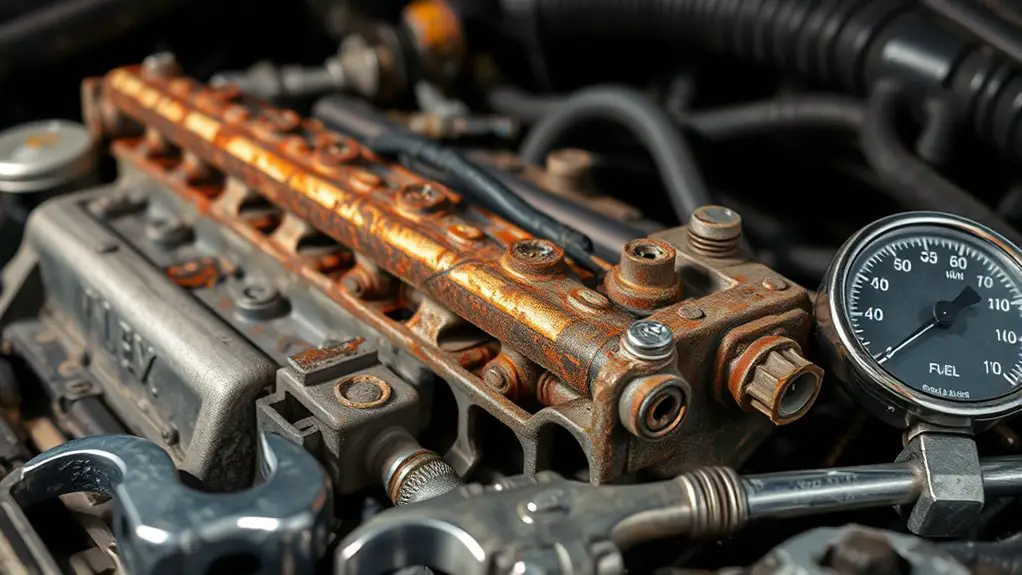
Fuel rail problems typically arise from fuel delivery inconsistencies, pressure losses, or contamination, and they directly impact engine efficiency by causing improper injector spray, lean or rich mixtures, and erratic timing. You’re not chasing myths—you’re diagnosing real, measurable symptoms tied to fuel pressure and injector issues. When fuel pressure drops, atomization worsens, producing irregular spray patterns that compromise the air–fuel mix and reduce combustion efficiency. Conversely, excessive pressure can overwhelm injectors, leading to sticking or leaking pintles and skewed pulse-width control. Contamination—diesel, ethanol, or water—clogs passages, introduces erratic flow, and forces compensatory timing adjustments that you’ll notice as throttle hesitation or misfire-like roughness. Systemic flow restrictions from clogged filters or faulty rails create transient lean events and spark timing shifts, eroding economy. You’ll optimize efficiency by verifying rail pressure stability, testing regulator performance, and isolating injector issues with precise flow and leak checks.
Early Warning Signs That Your Fuel Rail Is Failing
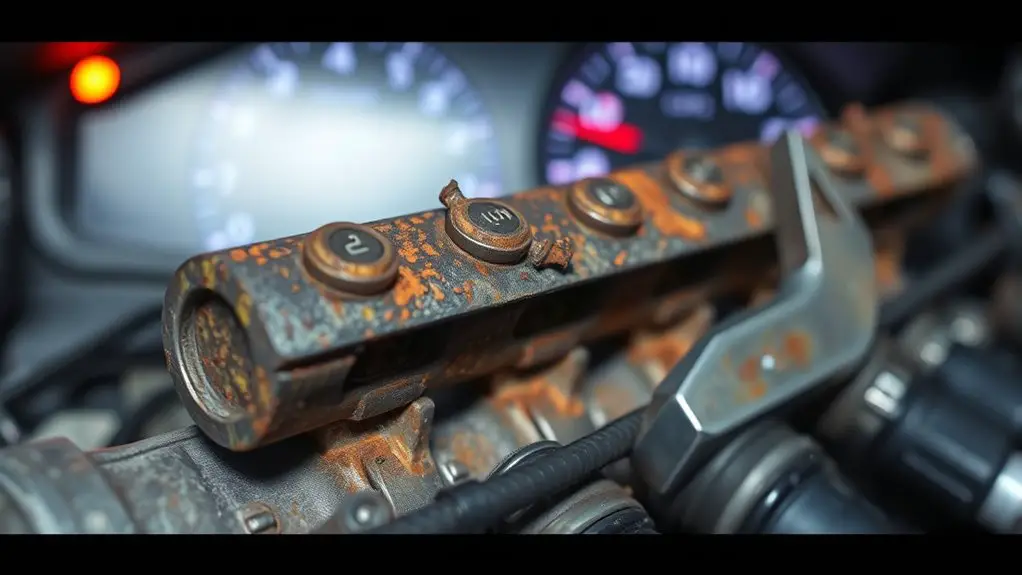
Are you noticing subtle, telltale signs that your fuel rail may be failing before it becomes a performance threat? You’re looking for measurable indicators that don’t rely on guesswork. Early warning signs appear in sensor data, fuel pressure behavior, and injector timing. A rising or fluctuating rail pressure, accompanied by erratic engine response, signals potential wear, clogging, or microscopic leaks. Abnormal roughness, misfires, or hesitation at acceleration can also indicate partial flow restriction. If you observe a persistent fuel odor or a hard-start condition after cooldown, treat it as a warning sign rather than a nuisance. Diagnostic scans revealing injector miscompensation or codes related to pressure regulation confirm concern. Addressing these signals promptly preserves efficiency, protects catalytic performance, and avoids cascading failures in the fuel system. Stay proactive; a disciplined approach minimizes downtime and maintains freedom through reliable operation.
- Fuel rail pressure fluctuations
- Erratic engine response or misfires
- Hard starts after cooldown
- Diagnostic codes for pressure regulation
Home Checks You Can Perform Quickly
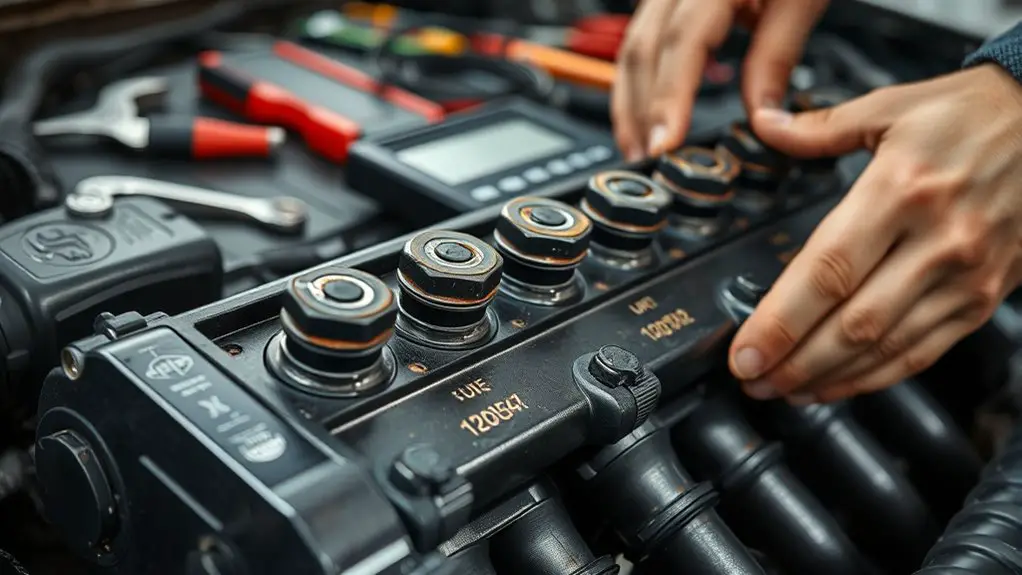
If you want quick, reliable checks, start with simple surface assessments you can perform without tools. You’ll focus on fuel pressure awareness and a careful visual inspection to identify obvious issues before deeper work. Begin with a calm engine run, listening for rough idle or misfires, then observe for fuel odor or vapor trails near lines and rail fittings. This is not a diagnosis, but it flags where to probe deeper.
| Quick Check | What to Look For |
|---|---|
| Fuel pressure cue | Inconsistent engine response or hesitation during acceleration |
| Visual inspection cue | Leaks, cracked hoses, swollen clamps, or corrosion at fittings |
In practice, you note symptoms, verify cleanliness around the rail, and confirm that clamps are snug. Document any deviations and plan targeted checks, knowing that fuel pressure consistency and a rigorous visual inspection are your first, noninvasive data points. This keeps you empowered and driving with confidence.
When to Seek Professional Diagnosis and Repair
Determining when to escalate from home checks to professional diagnosis isn’t about guesswork; it’s about clear, objective thresholds that indicate a fault beyond routine variability. You should seek professional assessment when symptoms persist, worsen, or spread across multiple systems, or when diagnostic tests indicate abnormal fuel rail readings, abnormal injector timing, or persistent misfires that home diagnostics can’t reconcile. A trained technician can verify fuel pressure, injector spray patterns, and rail leaks with calibrated equipment. Maintenance recommendations may include fuel system cleaning, component replacement, or regulator calibration, based on measured faults rather than intuition. Timeliness matters: delaying a professional diagnosis can lead to efficiency losses, increased emissions, and potential damage to downstream components.
- Persistent misfires or rough idle beyond troubleshooting results
- Unexplained fuel pressure deviations or regulator fault codes
- Engine warning lights that recur after reset
- Inconsistent fuel economy despite correct maintenance and driving habits
Steps to Restore Fuel Economy After a Fuel Rail Issue
After confirming the fault through professional assessment, the next step is to restore fuel economy by addressing the root causes revealed by the fuel-rail issue. You’ll begin with precise diagnostics to quantify deviations in injector spray patterns, rail pressure, and sensor feedback. Next, implement restoration techniques that restore stable pressure and consistent delivery, ensuring no lean or rich bias persists across cylinders. Replace or recalibrate compromised components, such as pressure regulators, fuel injectors, and O-rings, to eliminate leaks and irregular flow. Conduct a controlled drive cycle to validate steady-state and transient performance, documenting fuel trim adjustments and fuel rail dynamics. Verify fuel economy improvements under real-world loads, confirming no residual misfire or catalytic degradation. Maintain records for future maintenance, emphasizing preventative checks on seals, lines, and harness connections. This disciplined approach sustains efficiency gains, supporting long-term reliability while preserving engine integrity and ideal power response.
Frequently Asked Questions
Can a Faulty Fuel Rail Cause Starting Problems in Cold Weather?
A faulty fuel rail can cause starting problems in cold weather. You may experience hard starts, extended cranking, or failure to fire due to inconsistent fuel delivery and insufficient pressure. In cold starts, ethanol blends and warmer intake air demand precise fuel timing; a failing rail disrupts that balance. You should check for fuel pressure loss, leaks, and injector synchronization. Monitor cold-start behavior, verify fuel delivery rail pressure, and diagnose with proper diagnostic tools before driving.
Does Fuel Rail Damage Affect Exhaust Emissions Beyond Fuel Economy?
Yes, fuel rail damage can alter exhaust composition and skew emissions testing. You’ll see richer hydrocarbon and possibly CO due to misfire and incomplete combustion, plus elevated NOx if the engine runs hotter. Even if fuel economy isn’t the primary issue, emissions testing may reveal higher pollutants. You should inspect rail pressure, injectors, and O2 sensors, and remediate promptly to restore proper air-fuel ratios and compliant exhaust performance.
Can Aftermarket Parts Worsen Fuel Rail Performance or Reliability?
Ruthless risk rises: aftermarket parts can worsen fuel rail performance or reliability. You’ll see aftermarket compatibility issues provoke performance degradation, puncturing precision and provoking inconsistent pressure. You’re chasing freedom, but flawed fittings and poor tolerances undermine fuel delivery, spark timing, and emissions consistency. Verify OEM-grade specs, guarantee proper calibration, and audit compatibility docs. If you notice fluctuations, throttling, or misfires, pause installation, revert to trusted components, and recheck system seals, seals, seals.
Do Hybrids Experience Fuel Rail Issues Differently Than Gasoline Cars?
Yes, hybrids experience fuel rail issues differently than gasoline cars due to their hybrid technology blending power sources. You’ll find fuel rail behavior shaped by electric motor assist, regenerative braking, and multi-mode operation, which can alter pressure cycling and injector timing. This can impact fuel efficiency if rails clog or leak. You’ll want to monitor for irregular idling, misfires, or unexpected power shifts, and guarantee cooling and lubrication specs align with the hybrid system’s demand.
Is There a Risk of Fuel Rail Failure From Water Contamination?
Yes, there is a real risk of fuel rail failure from water contamination. Water can displace gasoline, corrodes metal surfaces, and disrupt injector spray patterns, degrading fuel quality and system performance. You’ll notice rough running, misfires, and reduced efficiency as water affects combustion. To minimize risk, maintain proper filtration, use good fuel quality, and address contaminated fuel promptly. If you suspect contamination, don’t run the engine; drain and inspect the rail and injectors.

